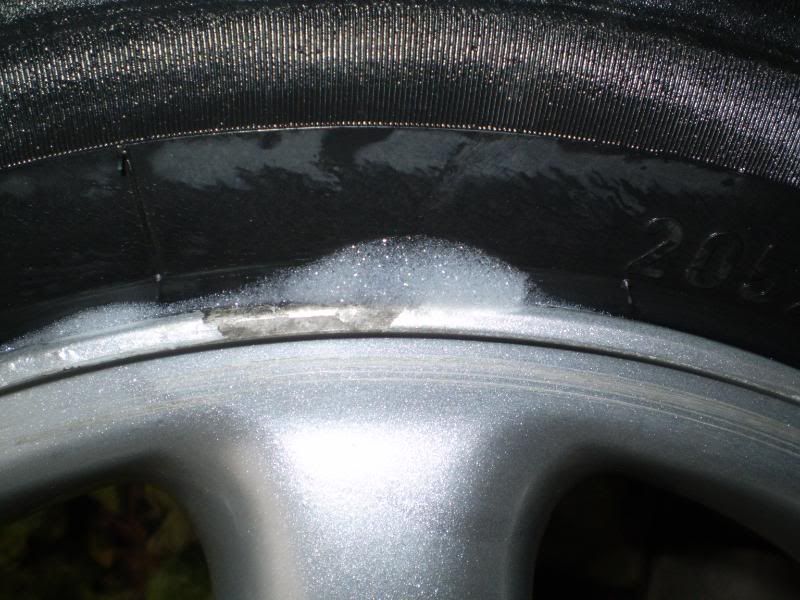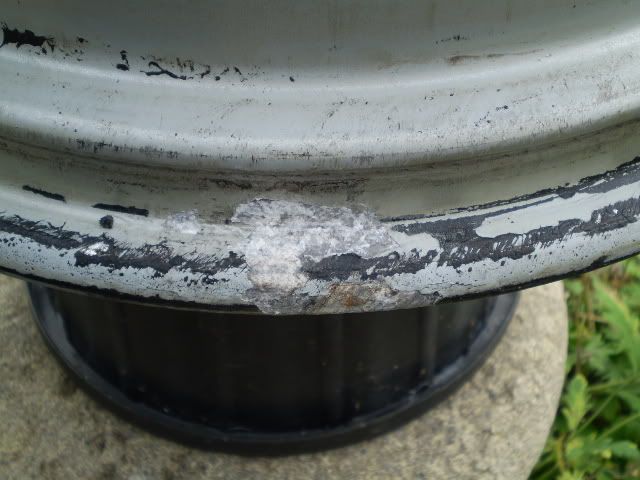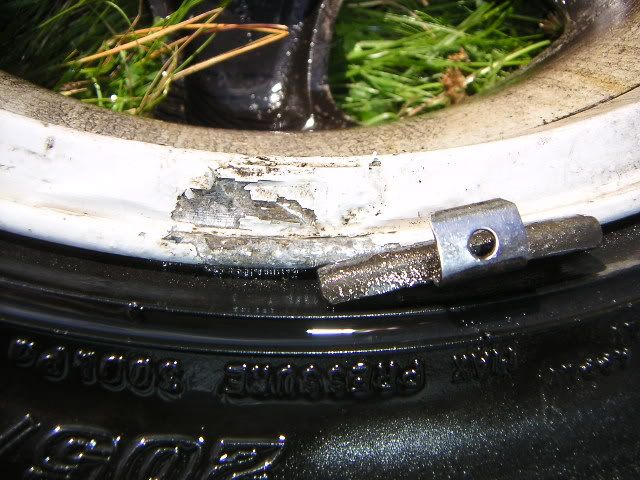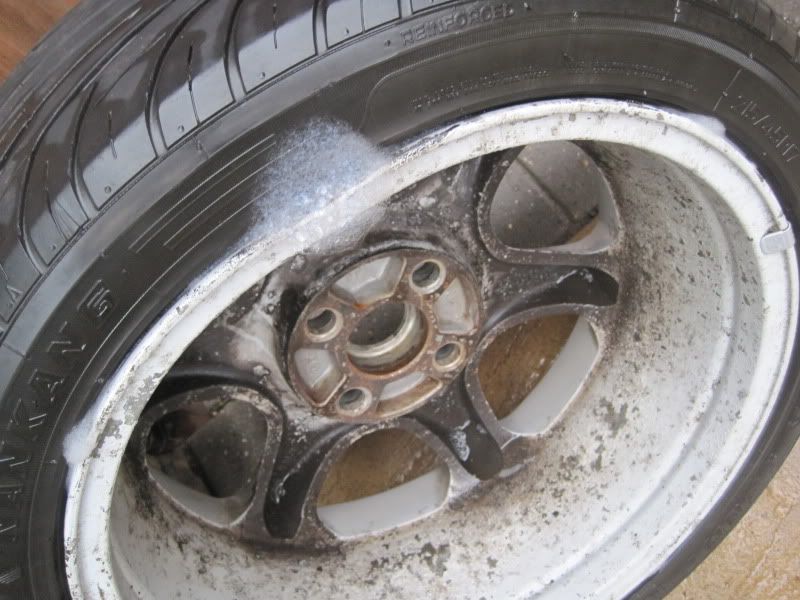What causes slow punctures?
Discussion
In our house we have a Volvo and Prius. Both were made in 2006 and have alloy wheels.
They seem to be inflicted with permanent slow punctures! I have taken the cars to a garage to have then re-sealed and valves replaced. However, they still seem to leak air at the rate of 1-2 psi a week.
Does that mean I need to replace the tyres?
Do the wheels need refurbishing?
They seem to be inflicted with permanent slow punctures! I have taken the cars to a garage to have then re-sealed and valves replaced. However, they still seem to leak air at the rate of 1-2 psi a week.
Does that mean I need to replace the tyres?
Do the wheels need refurbishing?
Thank you for the replies.
Well, the thing is, that I have already had them re-sealed. It does not seemed to have stopped them leaking!
Is it that these tyres can never be fully sealed and need replacing , or that I just need to get the tyre place to give it another go?
The problematic tyres are cheaper generic tyres. The Michelins that I have are fine. Could this be the cause?
Well, the thing is, that I have already had them re-sealed. It does not seemed to have stopped them leaking!
Is it that these tyres can never be fully sealed and need replacing , or that I just need to get the tyre place to give it another go?
The problematic tyres are cheaper generic tyres. The Michelins that I have are fine. Could this be the cause?
We can all speculate all the possibilities that COULD be the cause.
You could have porous alloys.
You could have corrosion on the bead.
You could have old tyre rubber on the bead.
You could have weeping valves.
You could have sub-standard tyres.
You could have a couple of tyres with nails in.
You could have perished valve stems.
You could have tyre bead damage.
As above, check them out & you will know, that is THE ONLY WAY YOU WILL FIND OUT, not by asking for opinions.
Any decent independent tyre place will have a large tub of water they can submerge your wheel in to check, if you don't want to do it.
You could have porous alloys.
You could have corrosion on the bead.
You could have old tyre rubber on the bead.
You could have weeping valves.
You could have sub-standard tyres.
You could have a couple of tyres with nails in.
You could have perished valve stems.
You could have tyre bead damage.
As above, check them out & you will know, that is THE ONLY WAY YOU WILL FIND OUT, not by asking for opinions.
Any decent independent tyre place will have a large tub of water they can submerge your wheel in to check, if you don't want to do it.
Edited by andyiley on Wednesday 1st April 09:20
We can all speculate all the possibilities that COULD be the cause.
You could have porous alloys.
You could have corrosion on the bead.
You could have old tyre rubber on the bead.
You could have weeping valves.
You could have sub-standard tyres.
You could have a couple of tyres with nails in.
You could have perished valve stems.
You could have tyre bead damage.
As above, check them out & you will know, that is THE ONLY WAY YOU WILL FIND OUT, not by asking for opinions.
Any decent independent tyre place will have a large tub of water they can submerge your wheel in to check, if you don't want to do it.
You could have porous alloys.
You could have corrosion on the bead.
You could have old tyre rubber on the bead.
You could have weeping valves.
You could have sub-standard tyres.
You could have a couple of tyres with nails in.
You could have perished valve stems.
You could have tyre bead damage.
As above, check them out & you will know, that is THE ONLY WAY YOU WILL FIND OUT, not by asking for opinions.
Any decent independent tyre place will have a large tub of water they can submerge your wheel in to check, if you don't want to do it.
Edited by andyiley on Saturday 4th April 08:45
andyiley said:
We can all speculate all the possibilities that COULD be the cause.
You could have porous alloys.
You could have corrosion on the bead.
You could have old tyre rubber on the bead.
You could have weeping valves.
You could have sub-standard tyres.
You could have a couple of tyres with nails in.
You could have perished valve stems.
You could have tyre bead damage.
As above, check them out & you will know, that is THE ONLY WAY YOU WILL FIND OUT, not by asking for opinions.
Any decent independent tyre place will have a large tub of water they can submerge your wheel in to check, if you don't want to do it.
Thank you. Very helpful. You could have porous alloys.
You could have corrosion on the bead.
You could have old tyre rubber on the bead.
You could have weeping valves.
You could have sub-standard tyres.
You could have a couple of tyres with nails in.
You could have perished valve stems.
You could have tyre bead damage.
As above, check them out & you will know, that is THE ONLY WAY YOU WILL FIND OUT, not by asking for opinions.
Any decent independent tyre place will have a large tub of water they can submerge your wheel in to check, if you don't want to do it.
Edited by andyiley on Wednesday 1st April 09:20
So, if a tyre has a damaged bead, then you will never be able to get it to seal correctly. It is only fit for the trash.
if the tyres are original or old it isn't beyond the realms of possibility that there is deterioration of the carcass allowing some air to escape through the side walls.
I deal with a tyre specialist who imports used tyres. These are all checked on arrival. He has a machine which acts like a wheel to seal the tyre after which it's coated with soapy water & inflated to a fairly high pressure by the machine. Any leaks in the tyre will bubble & a number produce lots of very fine bubbles on the sidewalls showing porosity. All defective tyres are returned to his suppliers.
Any cracks showing on your sidewalls?
They also as a matter of course dunk all fitted tyres - new or old - into a water tank to check that there are no leaks before refitting the wheel to the vehicle.
As already said, your best option is to dunk the wheel & tyre in a water bath & look for bubbles.
I deal with a tyre specialist who imports used tyres. These are all checked on arrival. He has a machine which acts like a wheel to seal the tyre after which it's coated with soapy water & inflated to a fairly high pressure by the machine. Any leaks in the tyre will bubble & a number produce lots of very fine bubbles on the sidewalls showing porosity. All defective tyres are returned to his suppliers.
Any cracks showing on your sidewalls?
They also as a matter of course dunk all fitted tyres - new or old - into a water tank to check that there are no leaks before refitting the wheel to the vehicle.
As already said, your best option is to dunk the wheel & tyre in a water bath & look for bubbles.
In my experience, invariably the slow punctures you describe are caused by rim clip wheel balance weights hammered onto the rim edge between the rim and tyre bead. It is near impossible to hammer those weights on without the sharp clip edges breaking through the protective wheel coating into the unprotected aluminum-alloy metal. Rain, salt and road filth then attack that bare metal and corrosion spreads allowing air to slowly escape.
Have you put some water around the tyre - rim interface to see if there is escaping pressure there. It is an effective test. Add some washing up liquid and bubbles will be a dead giveaway. Check both sides of the wheel for leaks. It is rare for the tyre alone to be at fault.
You can see where the balance weight clip was ~ paint gone :~

With tyre removed, you can see the corrosion where the air is escaping even through the sealant applied in a failed attempt to cure the leaks. This is a bad example but, a small area is all it takes :~

Here you can clearly see the small row of bubbles in the damaged area of the interface :~

Another more obviously cause is rim damage. Not so obvious if on the unseen inner side of the wheel :~

Over the past couple of decades or so, I have removed the tyre ~ or got a friendly local tyre outfit to remove them F.O.C. ~ then rubbed down the whole corroded interface areas around the wheel both sides smooth using grades of wet and dry. Then paint the smoothed interface with Hammerite smooth silver. Leave a couple of days to fully harden then get the tyres refitted. Rarely have further rim leaks. ALWAYS instruct anyone fitting tyres to your wheels NEVER to use rim-clip balance weights on your alloy wheels. I was watching my wheel being balanced and let out a yell which echoed around the workshop and then calmly explained why I did that and wanted self-adhesive balance weights fitted. Would have immediately undone my good work had I not noticed and yelled! .. just in time...
Here's one of the wheels I've DIY "refurbished" to an acceptable standard:~

Where the wheels have been excessively curbed and really need pro-powder coating refurbishment, shop around. Good work can be obtained at reasonable costs. I had a couple of sets of MG 18" Wheels done recently at acceptable cost in silver sparkle and brilliant white :~

Not all are my cars, I look after the cars in my family over the years ...
Have you put some water around the tyre - rim interface to see if there is escaping pressure there. It is an effective test. Add some washing up liquid and bubbles will be a dead giveaway. Check both sides of the wheel for leaks. It is rare for the tyre alone to be at fault.
You can see where the balance weight clip was ~ paint gone :~

With tyre removed, you can see the corrosion where the air is escaping even through the sealant applied in a failed attempt to cure the leaks. This is a bad example but, a small area is all it takes :~

Here you can clearly see the small row of bubbles in the damaged area of the interface :~

Another more obviously cause is rim damage. Not so obvious if on the unseen inner side of the wheel :~

Over the past couple of decades or so, I have removed the tyre ~ or got a friendly local tyre outfit to remove them F.O.C. ~ then rubbed down the whole corroded interface areas around the wheel both sides smooth using grades of wet and dry. Then paint the smoothed interface with Hammerite smooth silver. Leave a couple of days to fully harden then get the tyres refitted. Rarely have further rim leaks. ALWAYS instruct anyone fitting tyres to your wheels NEVER to use rim-clip balance weights on your alloy wheels. I was watching my wheel being balanced and let out a yell which echoed around the workshop and then calmly explained why I did that and wanted self-adhesive balance weights fitted. Would have immediately undone my good work had I not noticed and yelled! .. just in time...

Here's one of the wheels I've DIY "refurbished" to an acceptable standard:~

Where the wheels have been excessively curbed and really need pro-powder coating refurbishment, shop around. Good work can be obtained at reasonable costs. I had a couple of sets of MG 18" Wheels done recently at acceptable cost in silver sparkle and brilliant white :~

Not all are my cars, I look after the cars in my family over the years ...
Gassing Station | Home Mechanics | Top of Page | What's New | My Stuff



